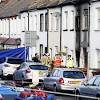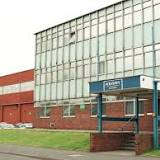Israel orders residents from more areas of Rafah to evacuate

Israel has called on residents from more areas of Rafah in the Gaza Strip to evacuate and head to the "expanded humanitarian area" as it prepares to ramp up its military assault.
Despite heavy US pressure, Israel has said it will proceed with an assault on the southern city, where more than 1.4 million people have taken refuge from the fighting - around half of them children - and Israeli forces say Hamas militants are dug in.
Tensions over the gathering offensive have led President Joe Biden to warn the US would stop supplying Israel with some weapons if it presses ahead with an invasion.

Israeli Prime Minister Benjamin Netanyahu has vowed to proceed with the attack with or without US arms, saying "we will fight with our fingernails" if needed in a defiant statement.
The United Nations and other agencies have warned for weeks an Israeli assault on Rafah, which borders Egypt near the main aid entry points, would cripple humanitarian operations and cause a disastrous surge in civilian casualties.
The UK government has said it had "not seen a credible plan to protect civilians" and questioned the suitability of the current evacuation area of al Mawasi, describing it as "pretty barren land".
Evacuations speak to limitations of Israel's military strategy

International correspondent
@sparkomatSignalling a further intensification of military operations in Gaza, the Israel Defence Forces have issued evacuation orders in southern and northern sections of the war-stricken territory.
The order accompanies a decision by Israel’s security cabinet to expand their operation in southern Gaza.
With estimated 1.4 million people displaced by the conflict in Gaza taking shelter in and around the city, the decision is set to inflame international opinion and put further strain on Israel’s relationship with the United States.
The UN’s refugee agency for the Palestinian territories, UNRWA, says 300,000 people will be effected by these evacuation orders.
The operations speak to the limitations of Israel's military strategy as they attempt to defeat and destroy Hamas.
The return of IDF troops into districts north of Gaza City comes months after it had declared victory in the area.
Residents report that Hamas has been attempting to increase the number of attacks in and around Gaza City.
Israel says Rafah is the last Hamas stronghold in Gaza and key to its goal of dismantling the group's capabilities and returning scores of hostages captured in the 7 October attack by insurgents that triggered the war.
However, Hamas has repeatedly regrouped, even in the hardest-hit parts of the besieged enclave.
Read more:Ex-NHS doctor stuck in Gaza says family are 'terrified'Analysis - US report on Israel is damning but cautiously equivocal
Heavy fighting is under way in northern Gaza, which was the first target of the ground offensive and where Israel said late last year it had mostly eradicated Hamas in the area.
Listen above then tap here to follow the Sky News Daily wherever you get your podcasts
Israeli army spokesman Avichay Adraee has told Palestinians to leave their homes in a number of neighbourhoods around Gaza City and head to shelters in the west, warning that people were in "a dangerous combat zone" and that Israel was going to strike with "great force".
It came as the Biden administration said Israel's use of US-provided weapons in Gaza likely violated international humanitarian law, but wartime conditions prevented officials from determining specific instances of alleged breaches.
The assessment in a 46-page unclassified State Department report to Congress risks further souring ties with Israel.

Keep up with all the latest news from the UK and around the world by following Sky News
Tap hereThe conflict was triggered by Hamas's October attack that Israel said killed 1,200 people and saw another 250 taken hostage.
Israel's offensive in Gaza has killed more than 34,800 Palestinians, mostly women and children, according to the Hamas-run Gaza health ministry, which does not distinguish between civilians and combatants in its figures.
Much of the territory has been destroyed and 80% of its population have been driven from their homes.


 United Kingdom
United Kingdom Argentina
Argentina  Australia
Australia  Austria
Austria  Brazil
Brazil  Canada
Canada  Germany
Germany  Ireland
Ireland  Italy
Italy  Malaysia
Malaysia  Mexico
Mexico  New Zealand
New Zealand  Poland
Poland  South Africa
South Africa  United States
United States 























